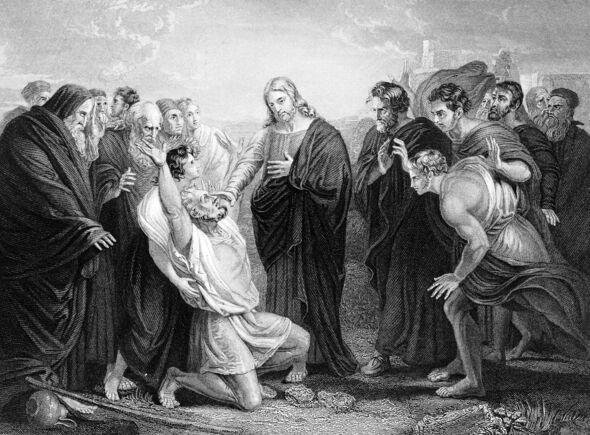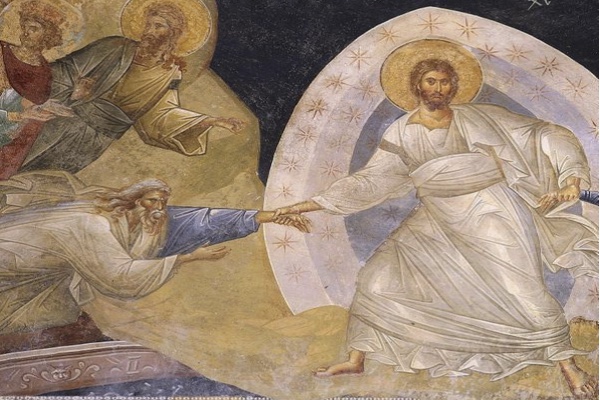The Lost Years of Jesus’ Life encompass the mysterious period between his childhood, as described in the Gospel of Luke, and the beginning of his public ministry around age 30. This enigmatic gap, spanning roughly 18 years, has fascinated scholars, theologians, and historians for centuries, prompting numerous theories about what Jesus might have done during this time. With scant biblical references, this article delves into historical contexts, cultural influences, and speculative interpretations to shed light on these obscured years, offering a comprehensive exploration that goes beyond surface-level facts.
The Biblical Foundation of the Lost Years
The Lost Years of Jesus’ Life begin with the limited scriptural accounts that frame this period, creating a foundational mystery that has intrigued believers and skeptics alike. The Bible provides only fleeting glimpses into Jesus’ early years, leaving vast interpretive space for historians and theologians. This section examines how the canonical texts set the stage for the unknowns, emphasizing the deliberate silences that have fueled centuries of speculation. By analyzing these gaps, we can better understand the theological implications and the human curiosity they evoke, making this a critical starting point for any discussion on the topic.
The Account in Luke’s Gospel

The Gospel of Luke offers the sole canonical reference to Jesus’ childhood beyond his infancy, providing a brief snapshot that highlights his precocious wisdom and devotion. In Luke 2:41-52, we find Jesus at age 12 during a Passover visit to Jerusalem, where he engages in deep theological discussions with religious teachers. This event is pivotal as it marks the last recorded instance of Jesus’ life until his baptism by John the Baptist around age 30. The narrative emphasizes Jesus’ growth “in wisdom and stature, and in favor with God and man,” suggesting a period of normal human development infused with divine purpose. However, the brevity of this account raises questions about why other aspects of his youth were omitted. Scholars argue that Luke’s focus was on Jesus’ mission rather than his personal history, but this selective storytelling has led to theories that the evangelist might have drawn from oral traditions or early Christian communities that preserved fragments of Jesus’ life.
This omission is not accidental; it reflects the broader purpose of the Gospels to portray Jesus as the Messiah, prioritizing his ministry over mundane details. The lack of information has prompted some to speculate that Luke intentionally skipped these years to maintain a sense of mystery or to align with theological themes of divine revelation. For instance, the story ends with Jesus returning to Nazareth and being obedient to his parents, which underscores his humanity and filial piety. Yet, this very normalcy contrasts sharply with the extraordinary events of his later life, inviting readers to ponder what transformative experiences might have occurred in between. By examining this passage, we gain insight into how the early Christian writers shaped the narrative, potentially editing out elements that didn’t serve their doctrinal goals.
In exploring the cultural context of first-century Judaism, it’s evident that coming-of-age stories were common in Jewish literature, such as in the stories of Samuel or David. Luke’s inclusion of Jesus’ bar mitzvah-like event might have been meant to parallel these, but the absence of further details leaves room for interpretation. Some theologians suggest that this gap symbolizes the “hiddenness” of God, a theme present in Jewish mysticism, where divine workings are not always immediately apparent. This idea enriches our understanding of the Lost Years, transforming them from mere historical voids into spiritually profound silences that challenge believers to seek deeper faith.
Absence in Other Gospels

While Luke provides a glimpse into Jesus’ adolescence, the other Synoptic Gospels—Matthew, Mark, and John—offer no direct references to his life between infancy and adulthood, creating a conspicuous silence that amplifies the mystery. Matthew and Luke both recount Jesus’ birth narratives, but after that, Matthew jumps straight to the start of Jesus’ ministry, and Mark begins even later with John the Baptist. John, with its more theological approach, omits childhood entirely, focusing on Jesus’ eternal nature. This uniformity in omission across the Gospels suggests a deliberate choice by the authors, possibly influenced by the early church’s emphasis on Jesus’ redemptive work rather than his personal biography. Historians debate whether this was due to a lack of available sources or a conscious effort to avoid legends that could dilute the core message.
The absence is particularly striking when compared to other ancient biographies, which often detailed the formative years of their subjects to establish character and destiny. For example, the lives of figures like Alexander the Great or Julius Caesar include extensive accounts of their youths. In contrast, the Gospel writers’ restraint implies that the Lost Years were not essential to proclaiming Jesus as the Christ. However, this has led to theories that early Christians might have suppressed certain stories to prevent misinterpretations or heresies. Some scholars point to apocryphal texts, like the Infancy Gospel of Thomas, which fill in gaps with miraculous tales, but these are generally considered non-canonical and legendary, highlighting the intentional sparseness of the official scriptures.
This silence has profound implications for biblical interpretation, encouraging a focus on faith rather than historical detail. It challenges modern readers to engage with the text on a spiritual level, asking what the gaps reveal about God’s workings in the world. By not providing a complete life story, the Gospels invite personal reflection and community discussion, fostering a dynamic faith that thrives on mystery. This aspect of the Lost Years underscores the tension between history and theology, reminding us that sacred texts often prioritize eternal truths over chronological accuracy.
Theological Significance of the Gaps
The gaps in the biblical narrative surrounding the Lost Years carry deep theological weight, symbolizing themes of divine hiddenness, human growth, and the mystery of incarnation. Theologians argue that this period represents Jesus’ “hidden life,” a time when he lived as an ordinary person, fully human, which affirms the Christian doctrine of the Incarnation. By not detailing these years, the scriptures emphasize that salvation comes through Jesus’ public ministry, death, and resurrection, rather than his private experiences. This approach aligns with the idea that God’s ways are not always knowable, as expressed in Isaiah
Theological Significance of the Gaps

The absence of information regarding Jesus’ life during his formative years is laden with theological significance that invites scholars, theologians, and believers alike to reflect on the implications of these gaps. These voids not only shape our understanding of Jesus as a central figure in Christianity but also challenge us to explore profound themes such as divine hiddenness, human growth, and the mystery of incarnation.
Divine Hiddenness
The notion of divine hiddenness plays a pivotal role in understanding the Lost Years of Jesus. It suggests that while God’s presence is a fundamental aspect of faith, there are moments when divine workings are veiled from human sight. This theme resonates throughout scripture, inviting contemplation about why God might choose to remain obscured or silent at crucial junctures.
In the case of Jesus, the omission of his childhood and adolescence can be interpreted as part of God’s broader plan—allowing the focus to remain on Christ’s ministry and sacrificial death rather than on his personal development. This intentional withholding of information mirrors the sentiment expressed in Isaiah 55:8-9, where God declares, “For my thoughts are not your thoughts, neither are your ways my ways.” The gaps in Jesus’ early life compel believers to trust in a larger narrative that transcends human understanding, challenging them to embrace faith amidst uncertainty.
Moreover, divine hiddenness invites believers to seek deeper meanings and connections within their own lives. Just as Jesus experienced a period of silence before stepping into his public calling, individuals may undergo similar phases of spiritual formation that are not publicly acknowledged or understood. This reflection fosters a sense of humility and patience, allowing for the acknowledgment that God often operates outside of visible action.
Human Growth and Development
Another crucial theme highlighted by the gaps in Jesus’ early life is the importance of human growth and development. Luke 2:52 explicitly states that Jesus grew “in wisdom and stature, and in favor with God and man,” suggesting that his youth was marked by a natural progression reflecting typical human experiences. This portrayal shifts the focus from a purely miraculous being to one who embodies humanity in its fullness.
By leaving out the specifics of Jesus’ teenage years, the Gospels underscore the legitimacy of ordinary human experiences and relationships. This invites believers to recognize that growth occurs not just through divine encounters but also in everyday settings—within families, friendships, and communal gatherings. The very act of growing up, with its associated struggles and joys, becomes an integral part of understanding Jesus’ mission in the world.
This theme opens up avenues for discussing how individuals today can cultivate spiritual maturity in their own lives. Just as Jesus learned and developed over time, so too must contemporary believers engage in lifelong learning and growth. Emphasizing this element of human experience encourages a holistic approach to spirituality, valuing both the extraordinary and mundane aspects of life as sacred opportunities for transformation.
The Mystery of Incarnation
Understanding the mystery of the Incarnation is another theological lens through which to view the gaps in the narrative of Jesus’ life. The doctrine of the Incarnation—the belief that God took on human form in Jesus—invites reflection on the complexity and profundity of divine engagement with creation. By not detailing every aspect of Jesus’ early life, the Gospel writers emphasize the divine nature of Jesus while simultaneously affirming his humanity.
The tension between divinity and humanity lies at the heart of Christian theology. While the Gospels present Jesus as the Messiah, performing miracles and teaching profound truths, the omission of his personal story serves as a reminder that he was also fully human, experiencing life as we do. This duality enriches the understanding of the Incarnation and deepens believers’ appreciation for the salvific work of Christ.
Additionally, the mystery surrounding the Lost Years prompts believers to embrace the complexities of their faith. Just as Jesus navigated the intertwined realities of being both human and divine, followers of Christ are called to embody their faith amidst uncertainty, wrestling with questions of meaning and purpose. This dynamic relationship between understanding and mystery encourages a rich exploration of spiritual truths, inviting believers to engage with God in a transformative way.
Conclusion

In summary, the gaps in the biblical narrative concerning Jesus’ early years serve multiple theological purposes, contributing to the richness of faith and the complexities of understanding Jesus as both fully human and fully divine. Through the exploration of divine hiddenness, human growth, and the mystery of the Incarnation, readers are invited to delve deeper into the nuances of their beliefs, finding value in both the revelations and the mysteries of faith.
The absence of detailed accounts in the Gospels should not be perceived as deficiencies but rather as invitations for believers to engage in a more profound dialogue with their spirituality. By reflecting on the Lost Years, individuals can cultivate a faith that embraces uncertainty and seeks deeper understanding, ultimately leading to a more vibrant relationship with God. Thus, the theological significance of the gaps transcends mere historical curiosity, becoming a source of encouragement and inspiration for believers navigating their own spiritual journeys.

GIPHY App Key not set. Please check settings